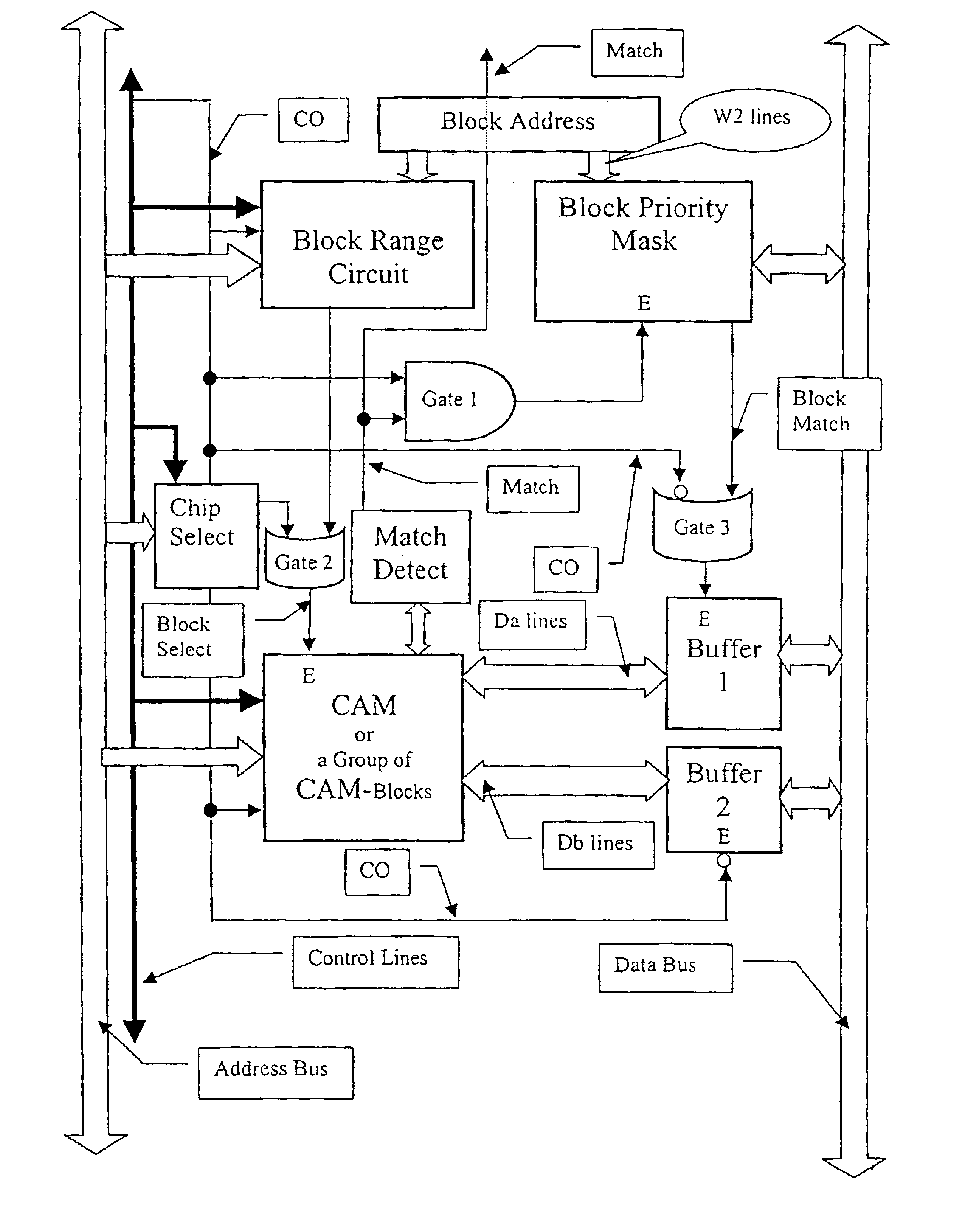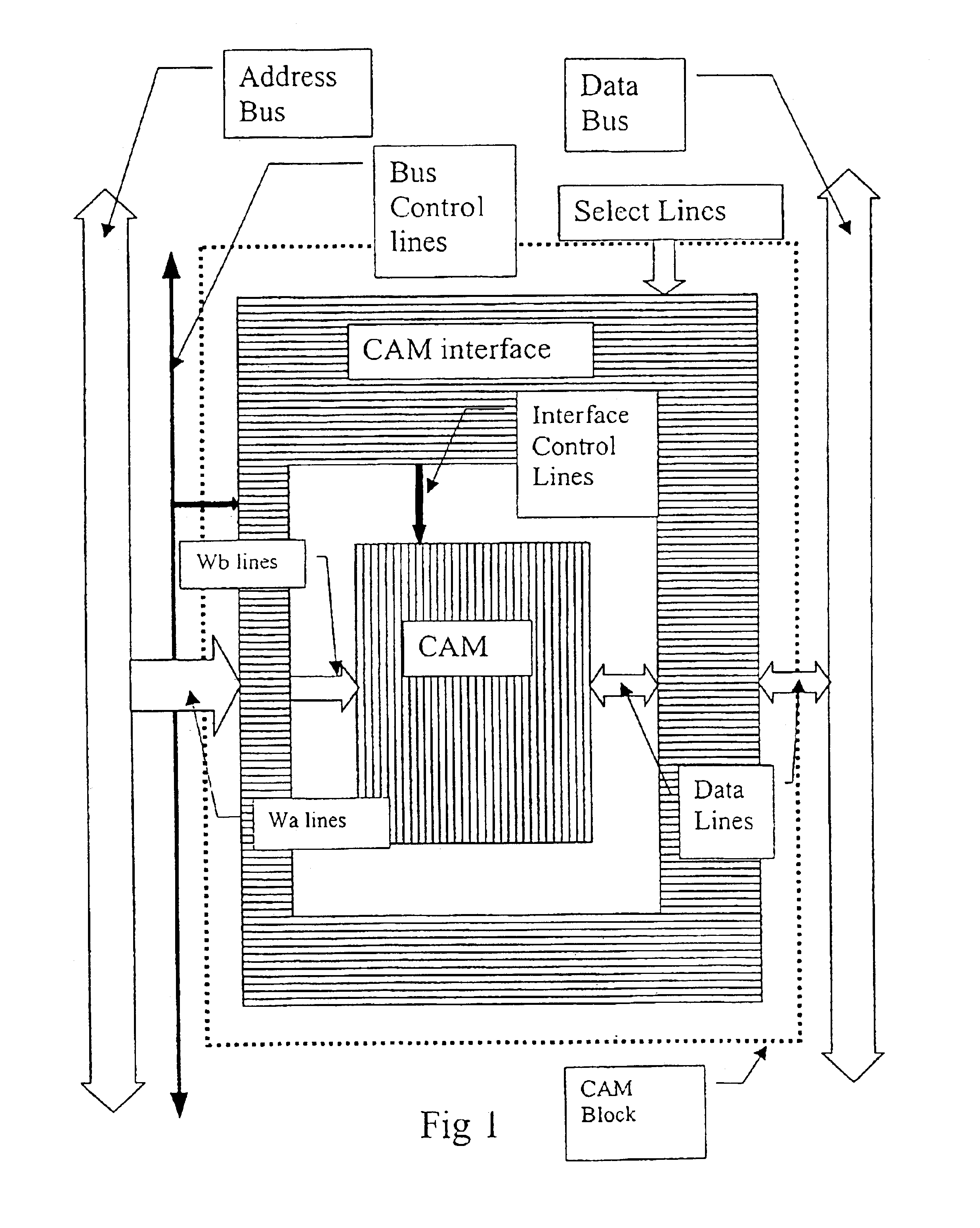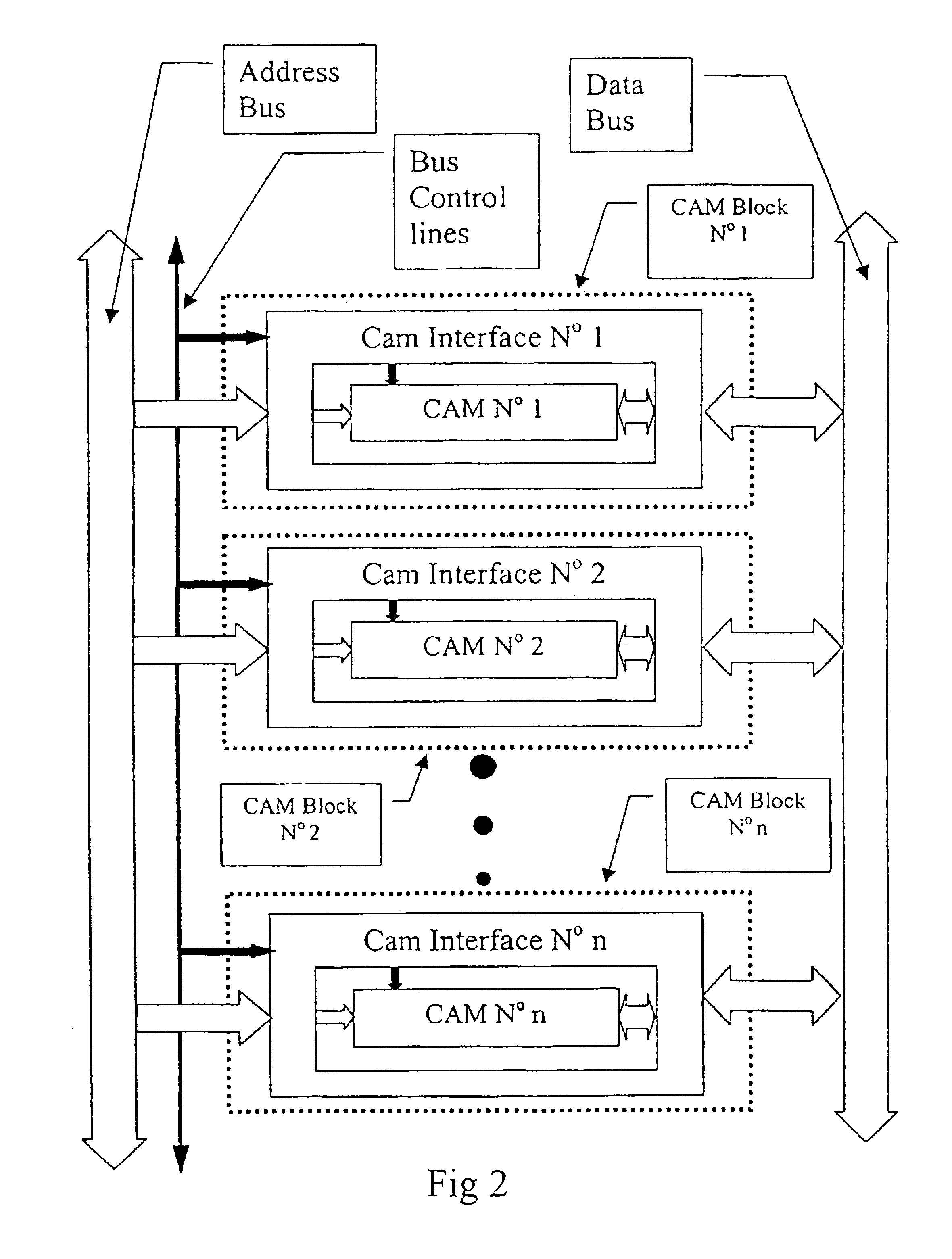Combined content addressable memories
a content addressable memory and combination technology, applied in memory adressing/allocation/relocation, digital storage, instruments, etc., can solve the problems of affecting the response time of methods, affecting the response time of overall content addressable memory, and limited capacity of cam devices
- Summary
- Abstract
- Description
- Claims
- Application Information
AI Technical Summary
Benefits of technology
Problems solved by technology
Method used
Image
Examples
Embodiment Construction
[0023]It is the object of the present invention to provide a high speed interface that enables the integration of several Content Addressable Memories into a larger, Combined Content Addressable Memory. In accordance with the inventive method and circuitry, the new interface provides connections to the BUS system only, and no connection between different CAMs within the same system is needed. The inventive interface is advantageous in that the delay added by the interface is very small, and not dependent on the number of CAMs installed. Thus the novel interface integrates all installed CAMs in one Content Addressable Memory of larger size, having a response time almost equal to that of a single CAM device.
[0024]The inventive interface may also be used to interconnect memories of the Call Out type. These memories are designed to operate in either a R / W mode or a Call Out mode. A Call Out Memory comprises a Range Circuit and when in the Call Out Mode, it will output on the Bus the Add...
PUM
 Login to View More
Login to View More Abstract
Description
Claims
Application Information
 Login to View More
Login to View More - R&D
- Intellectual Property
- Life Sciences
- Materials
- Tech Scout
- Unparalleled Data Quality
- Higher Quality Content
- 60% Fewer Hallucinations
Browse by: Latest US Patents, China's latest patents, Technical Efficacy Thesaurus, Application Domain, Technology Topic, Popular Technical Reports.
© 2025 PatSnap. All rights reserved.Legal|Privacy policy|Modern Slavery Act Transparency Statement|Sitemap|About US| Contact US: help@patsnap.com



